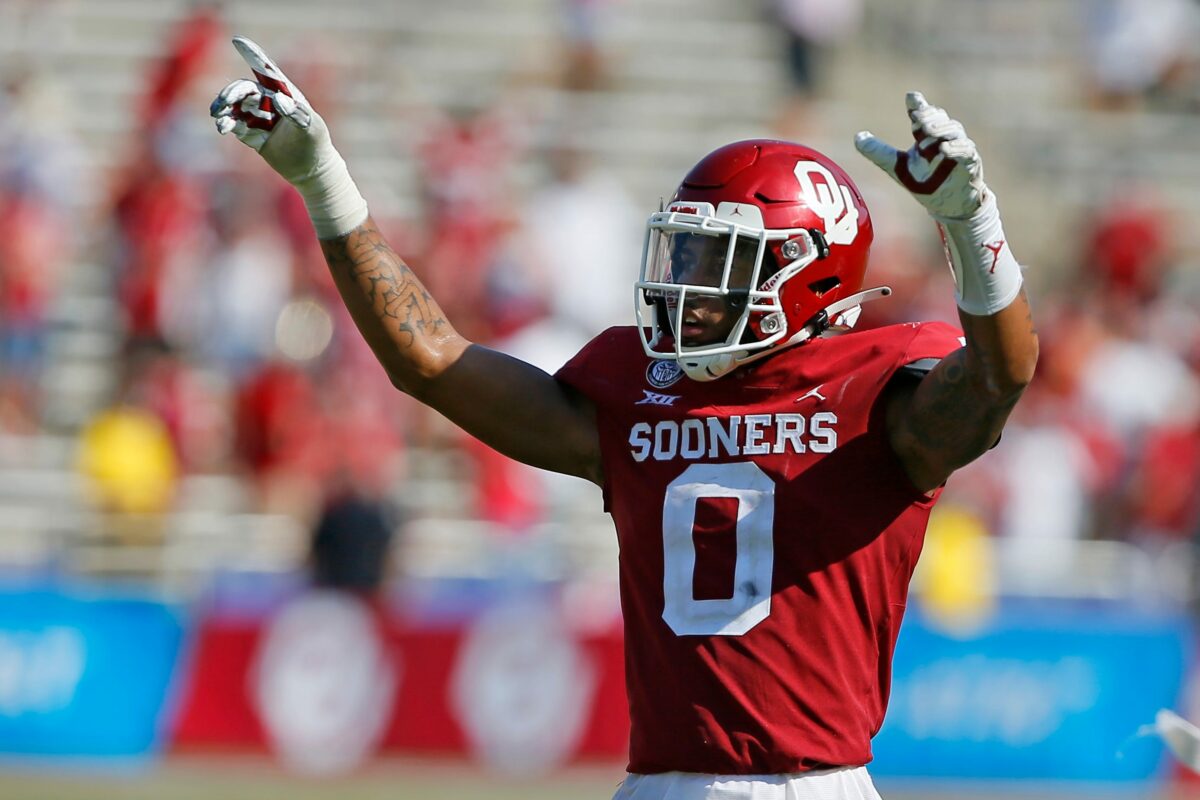One of the significant changes facing the Oklahoma Sooners’ offense in 2022 is the pace at which they play. Under Lincoln Riley in 2021, the Sooners averaged 65.2 plays per game, which ranked 98th in the country. Ole Miss, where new offensive coordinator Jeff Lebby ran the show last year, was second in the FBS in plays per game at 78.2.
And that’s what Jeff Lebby is trying to accomplish with the University of Oklahoma. Play fast and be one of the top five teams in the country in terms of plays run. And as they work to install the offense, how’s the defense responding to the tempo?
Woodi Washington, meeting with the media, had this to say about the challenges the defense has faced this spring.
“Just getting adjusted to the offense’s tempo and just learning the new calls for the defense,” said Woodi Washington. “I think we’re doing a very good job of matching their tempo. Got some things to work on, but I think we’re doing a good job… the offense goes very, very, very quick. It’s something that we’re definitely not used to seeing, but we’re definitely getting adjusted to it.”
In the modern Big 12, not many teams play with the same pace as Ole Miss did in 2021. Oklahoma State was the only team in the Big 12 to average more than 70 plays per game and was the only team inside the top 50 in plays per game in the country.
While the Sooners averaged more points than the Rebels last season, there’s a bit of a schedule disparity in the SEC. While Oklahoma had formidable defenses to contend with in Oklahoma State and Baylor, it’s fair to argue Alabama, Texas A&M, and Auburn have stronger defensive units.
There are several reasons to play uptempo. The first is to make the defense play at your pace to limit how often they can make substitutions. Over time, they’ll wear down, and you’ll be able to take advantage.
The second is to keep the defense in “vanilla looks.” When a defense can’t disguise what it wants to do with its coverage and rush looks, it makes it that much easier on a quarterback. Because the offense is getting lined up and snapping the ball quickly, the defense has to get set and has a more challenging time playing games in coverage or at the line of scrimmage. They’re just trying to get the defensive call in and get into the proper alignment.
Lastly, it forces teams to communicate faster than they might like to. When offenses are running uptempo or no-huddle, the defensive play-caller has to relay the call much quicker than a team that will take their time at the line of scrimmage. The urgency in which the call has to come in can lead to miscommunications and errors in assignments.
This will benefit the defense when they get into the fall because it will help them communicate quicker and more clearly. And in a team sport like football, communication is vital. Big plays often happen not because a player got beat but because there was a miscommunication somewhere. Being forced to communicate quickly now will help them have a better grasp of their responsibilities in the fall and should help minimize mistakes in the scheme.
[listicle id=53456]
Contact/Follow us @SoonersWire on Twitter, and like our page on Facebook to follow ongoing coverage of Oklahoma news, notes, and opinions. Let us know your thoughts, comment on this story below. Join the conversation today.
